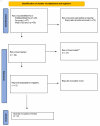Utilizing Sertoli Cell Transplantation as a Therapeutic Technique for the Management of Neurodegenerative Diseases
- PMID: 40256588
- PMCID: PMC12004054
- DOI: 10.32592/ARI.2024.79.4.701
Utilizing Sertoli Cell Transplantation as a Therapeutic Technique for the Management of Neurodegenerative Diseases
Abstract
Neurodegenerative diseases (NDs), such as Alzheimer's disease (AD), Parkinson's disease (PD), amyotrophic lateral sclerosis (ALS), and Huntington's disease (HD), are defined by aberrant protein accumulation, brain atrophy, and gradual decline of neuronal function. Despite the considerable endeavors devoted to discovering treatments for NDs in recent decades, the demand for efficient therapeutic agents persists. Sertoli cells (SCs) play a crucial role in providing a supportive structure and environment for the development of germ cells. SCs, whether transplanted as xenogeneic or allogeneic cells, present a viable choice for enhancing graft persistence via the release of immunomodulatory and trophic factors, including neurturin (NTN), platelet-derived growth factor, Fas (CD95) ligand (FasL), glial-derived neurotrophic factor, interleukin 1 (IL1), brain-derived neurotrophic factor, interleukin 6 (IL6), transforming growth factors, and vascular growth factor, that protect replaced cells and tissues from the immune system. However, there is currently no cohesive evidence regarding the neuroprotective influence of the transplantation of SCs on NDs. Therefore, this review focuses on assessing stem cells' neuroprotective impact on neurodegenerative diseases in pre-clinical settings and presenting cohesive information. A comprehensive search was conducted between 2000 and 2022. In the identification stage, after a comprehensive search across databases, including Web of Science, Scopus, and PubMed/Medline, 103 papers were obtained. The search conducted in the present study yielded a total of nine relevant papers on the therapeutic effect of the transplantation of SCs on NDs. It was found that the transplantation of SCs exhibits a promising impact on enhancing the symptoms of neurological diseases in rats. The findings highlight the need for multiple standardized pre-clinical trials to find reliable information to confirm the utilization of the transplantation of SCs and the reduction of the symptoms of neurodegenerative diseases.
Keywords: Cerebellar Ataxia; Huntington's disease; Neurodegenerative diseases; Parkinson's disease; Sertoli cells (SCs).
Conflict of interest statement
The authors declare that they have no conflict of interest.
Figures
Similar articles
-
Sertoli cell transplants: their use in the treatment of neurodegenerative disease.Mol Med Today. 1998 Nov;4(11):471-7. doi: 10.1016/s1357-4310(98)01355-0. Mol Med Today. 1998. PMID: 9857366 Review.
-
Effect of Sertoli Cell Transplantation on Reducing Neuroinflammation-Induced Necroptosis and Improving Motor Coordination in the Rat Model of Cerebellar Ataxia Induced by 3-Acetylpyridine.J Mol Neurosci. 2020 Jul;70(7):1153-1163. doi: 10.1007/s12031-020-01522-x. Epub 2020 Mar 12. J Mol Neurosci. 2020. PMID: 32166479
-
Mesenchymal stem cells: potential in treatment of neurodegenerative diseases.Curr Stem Cell Res Ther. 2014;9(6):513-21. doi: 10.2174/1574888x09666140923101110. Curr Stem Cell Res Ther. 2014. PMID: 25248677 Review.
-
Perinatal Tissue-Derived Stem Cells: An Emerging Therapeutic Strategy for Challenging Neurodegenerative Diseases.Int J Mol Sci. 2024 Jan 12;25(2):976. doi: 10.3390/ijms25020976. Int J Mol Sci. 2024. PMID: 38256050 Free PMC article. Review.
-
Sertoli Cells Avert Neuroinflammation-Induced Cell Death and Improve Motor Function and Striatal Atrophy in Rat Model of Huntington Disease.J Mol Neurosci. 2018 May;65(1):17-27. doi: 10.1007/s12031-018-1062-x. Epub 2018 Apr 21. J Mol Neurosci. 2018. PMID: 29680983
References
-
- Aguzzi A, O'connor T. Protein aggregation diseases: pathogenicity and therapeutic perspectives. Nat Rev Drug Disc. 2010;9(3):237–48. - PubMed
-
- Ahmadi H, Boroujeni ME, Sadeghi Y, Abdollahifar MA, Khodagholi F, Meftahi GH, et al. Sertoli cells avert neuroinflammation-induced cell death and improve motor function and striatal atrophy in rat model of Huntington disease. J Mol Neurosci. 2018;65:17–27. - PubMed
Publication types
MeSH terms
LinkOut - more resources
Full Text Sources
Medical
Research Materials
Miscellaneous

